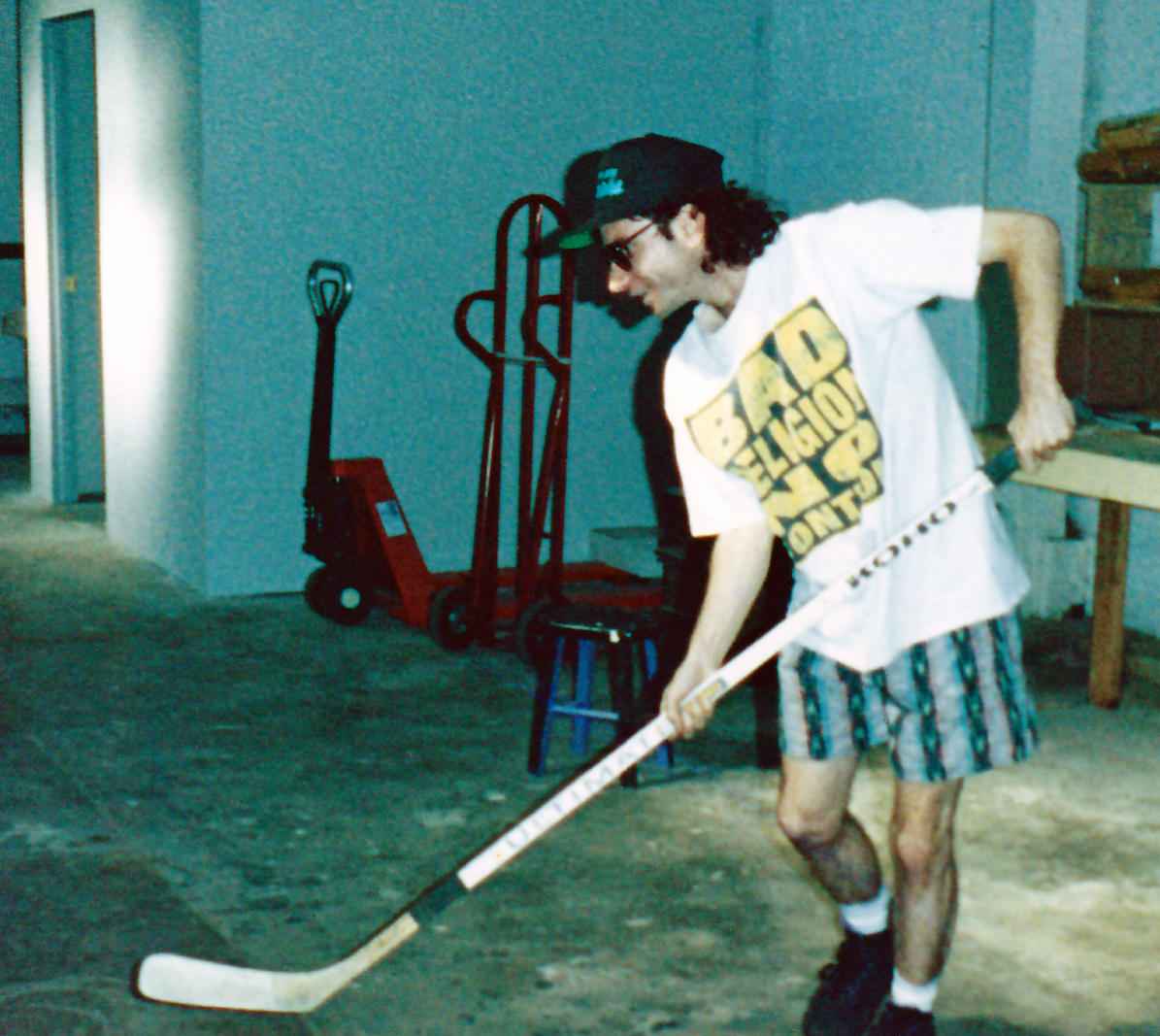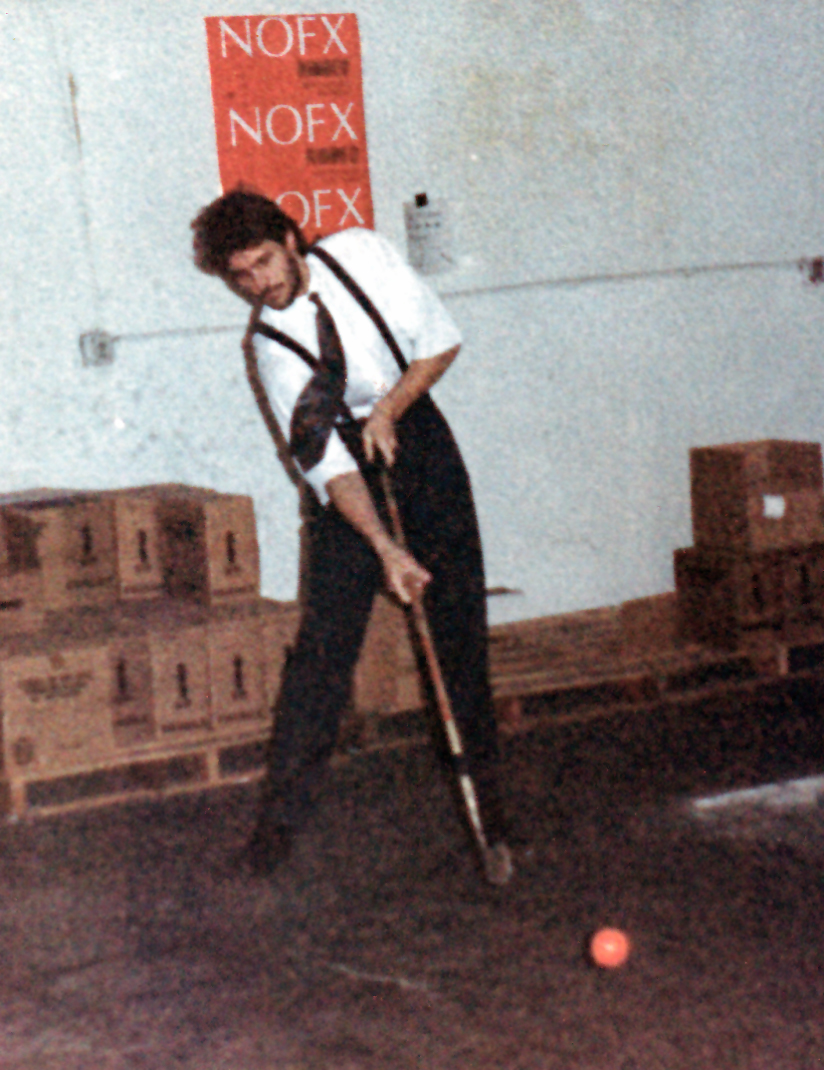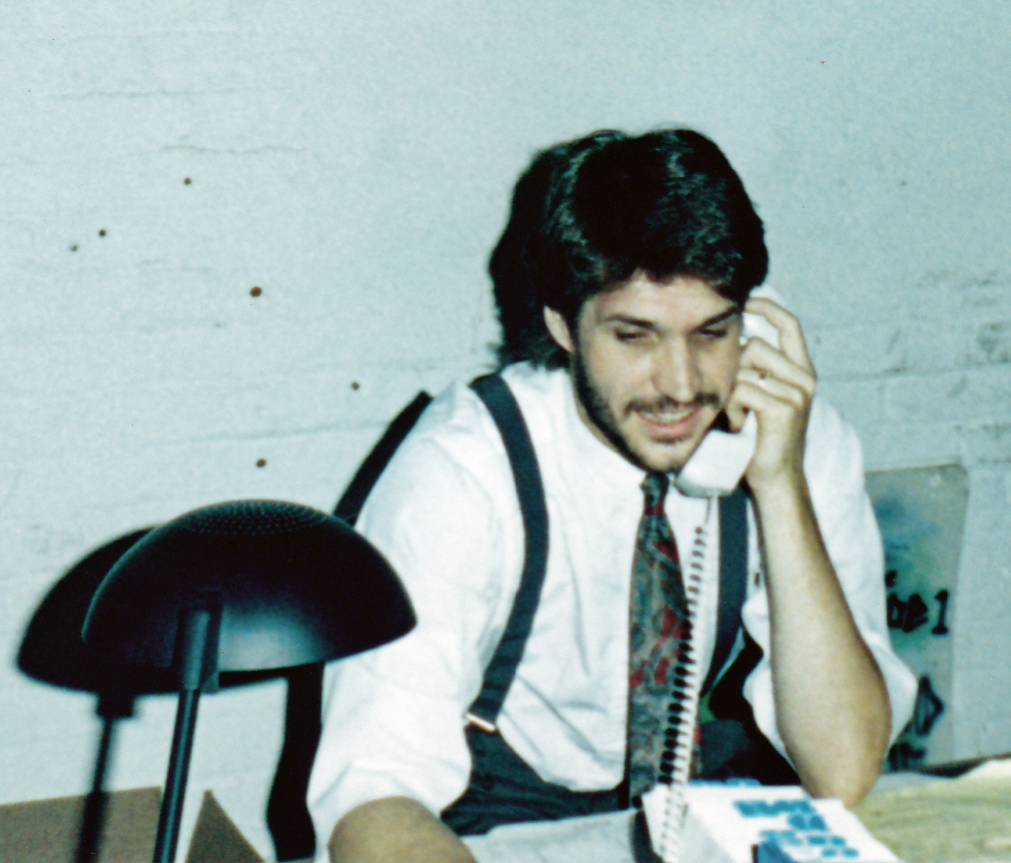STILL NEEDS TO BE REWRITTEN!!
Brett was always the president of the label although in 1980 Epitaph was nothing more than a logo and a PO box and they used to store the records out in mother Graffin's garage. Greg and Brett sat in Brett's dining room and drew and came up with Epitaph logos. Greg still keeps a sketch pad at home of ideas he drew back then. Greg: "Brett and I were both into art (...) He was a better artist (at drawing) than I was, but I had good ideas. I drew the original tombstone, but it didn't say E, it was a gravestone that had a record in the middle of it, I made it all 3-D with a split down it. Brett thought to make slits in it so it makes an E, which was even better, and that stuck". Brett and Greg came up with the name while joking about the King Crimson song Confusion Will Be My Epitaph. Greg: "Epitaph, what a great idea! Because epitaph is in a sense a record of a lifetime; these grooves in the vinyl will be our epitaph". When How Could Hell... eventually sold around 12,000 copies (initially they had pressed up 6,000 only), the Epitaph "office" spread from Greg's living room into Brett's home as well. Not only did they personally stuff all the albums by hand, but to relieve the tedium, they sometimes wrote little notes on the sleeve or autographed copies. After Into the Unknown, Brett was forced to disband the label as it was bankrupt, so he concentrated on his job at Chameleon Records. When in 1987 he went back to BR and resurrected Epitaph, Jay was working in Epitaph too (working for Brett in a way). They would sign bands and immediately license them to Chameleon. Epitaph's debut unlicensed release was by L7, but it was the label's second record (Suffer) which was the first Epitaph distributed itself. It was in 1988 that Brett decided to give Epitaph a real try; to give it his full attention and take a systematic approach to creating an independent record company. Even though he had dabbled in the record business as far back as 1980, it had never been a systematic approach, nor a full time pursuit. In 1988 he made a plan for himself. He figured out his costs and what his projected income would be. He projected at what rate he would grow; determined how many releases he wanted to do per year and what it would cost him i.e. did cash flow projections. He learned how to do all of this from asking people, and buying books, and checking out books from the library. He didn't have a real business background, although he had worked in a few businesses before. Everything went far better than anyone could have predicted. In 1989 they put out No Control and sold 60,000 albums. Jay: "At the time you had two heavies, Alternative Tentacles (run by Jello Biafra) and SST (Black Flag's label), but they'd been around so long that they had a catalogue of like 900 records, so they could pretty much run their thing of being what they were. Then all of a sudden, there was Dischord (Ian MacKay's, of Fugazi, label) and Epitaph that were out there selling their records. Fugazi would put out a record and sell 50,000 out the door, and we'd be, 'Wow!' Then we put out No Control and sold around 60,000. It was funny, because even with no contact, we were playing this game from East and West Coast, 'How big can this get? How many can we really do? How far can we push this before something happens?'". With Generator BR actually signed a 60-page record contract with Epitaph, similar to the ones that the majors supply, and they shipped 100.000 copies. They didn't want to press too many albums, so Jay and Brett used to take pre-orders. They would call distributors two months in advance, send them a demo tape, and then get the orders, so they knew how many to press". Jay: "It was the game of balance. We'd give the distributors 60 days to pay us, and made sure the pressing plant gave us 90 days. We had to work it this way. If it was costing us $1.10 to make the CD, and we were pressing 60,000. Well, we didn't have the money. Every year the pre-orders would match whatever the year's total was for that album, and then chop on another 5,000 or 6,000. Even though these numbers are worldwide, I was just amazed". Eventually Jay quit Epitaph during the Recipe for Hate Tour, because the workload was too big to handle. Jay: "It wasn't fair for me to be working there and be away (...) It was harder for Brett, because he was away from the office and things were happening quickly. Obviously, The Offspring was just starting to take off...".
Brett said all bands on Epitaph have one hundred percent creative freedom to play and say anything they feel. The band voted unanimously for leaving Epitaph, but Brett has later on explained he did it "because not to would have seemed self serving. I was trying to be unselfish. My policy has always been to put BR's wishes in front of Epitaph's and this was the final way of proving it". He still wishes BR had never left Epitaph.
Epitaph's address was 6201 Sunset #111 LA CA 90028 in the 1988 reissue of How Could Hell..., and 22458 Ventura Blvd. Woodland Hills, CA 91367 in the original issue, the EP's and Into the Unknown.
Brett: "There is a certain aural unity to the label, but it is more a by-product of my marketing strategy than a result of what I look for in an artist. I realized early on that I don't have big marketing dollars or promotional dollars or artist development dollars. Therefore, I needed to build label recognition as early as possible with a sound and a direction. We wanted to get to the point quickly, where the people would just trust our taste so completely they would buy anything with an "E" on the label knowing that they would like it. This is not an original idea. Lots of labels have made their name that way (...) It's probably the best way for a small label to go because that way you can be a lot more effective with your limited resources. As far as who I pick to be on my label; the music has to do something for me (...) I'll hear a song and it will give me a shiver (...) It's almost a visceral thing with me. It's not very cerebral". "I want to do the best job I can, and go as far as I can with it. I want to have a model company with good benefits, health care, parental leave, sick pay, where the lowest paid and highest paid are very close in their salaries, and everyone has freedom of expression and opinion. My goal is to show what can be done within the confines of our system, and be an example. The label is at the service of the bands. We try to create an environment where they can be creative and make records, and reach as many people as possible".
In January 2002 Brett said that "I had multiple offers for $50- and $100 million for half of my business". He never took any of them.
 Eric Melvin (NOFX), Brett, Jeff Abarta and Jay (1991) |
  Greg Hetson and Jay playing ball hockey in the old Epitaph office/warehouse in North Hollywood (1991) |
 Jay pretending to be working (1991) |
All photos by Shawn Merrill
| 09/02 | Added photo - By Marty |
Let us know right now!